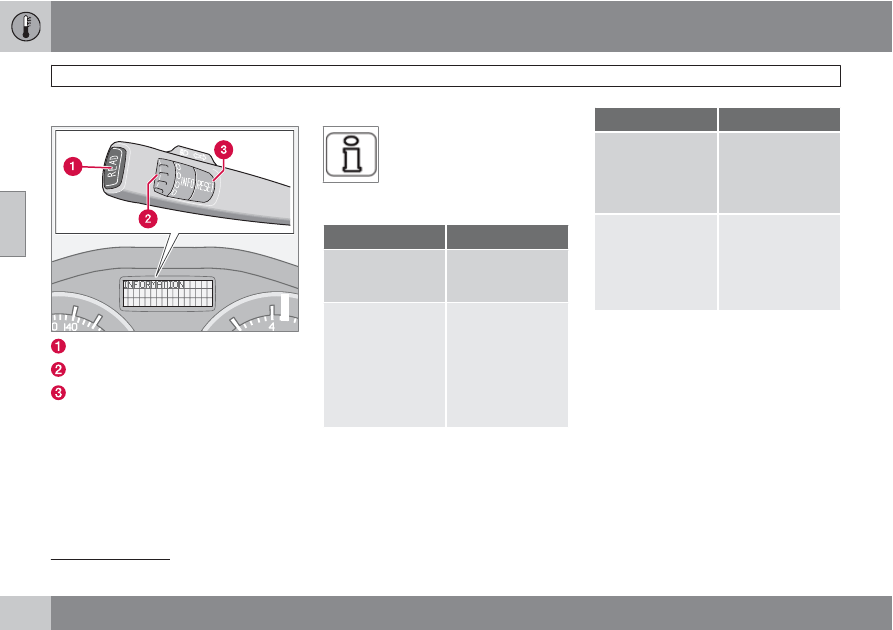Volvo V50 (2012 year). Manual - part 6

03 Climate control
Fuel-driven engine block heater and passenger compartment heater*
03
102
*
Option/accessory, for more information, see Introduction.
Activating the heater
G029052
READ button
Thumbwheel
1
RESET button
1
Symbols and display messages
When one of the timer's settings or
Direct start
is activated, the infor-
mation symbol in the combined
instrument panel illuminates and
the information display shows an
explanatory text.
Display
Specification
FUEL HEATER ON
The heater is
switched on and
running.
TIMER IS SET FOR
FUEL HEATER
Reminder that the
heater will start at
the set time after the
car has been left,
when the remote
control key is
removed from the
ignition switch.
Display
Specification
HEATER STOP-
PED LOW BAT-
TERY
The heater has been
stopped by the car's
electronics in order
to facilitate starting
the engine.
HEATER STOP-
PED LOW FUEL
LEVEL
The heater has been
stopped by the car's
electronics in order
to facilitate starting
the engine as well as
50 km driving.
Direct start and immediate stop
1.
Scroll with the thumbwheel to
DIRECT
START PARK HEAT OFF
or
DIRECT
START PARK HEAT ON
.
2.
Long presses on the RESET button
change between the two alternatives.
DIRECT START PARK HEAT ON
: Parking
heater switched on manually or with pro-
grammed timer.
DIRECT START PARK HEAT OFF
: Parking
heater switched off.
1
No function in cars without trip computer, fuel-driven parking heater as well as stability and traction control system.